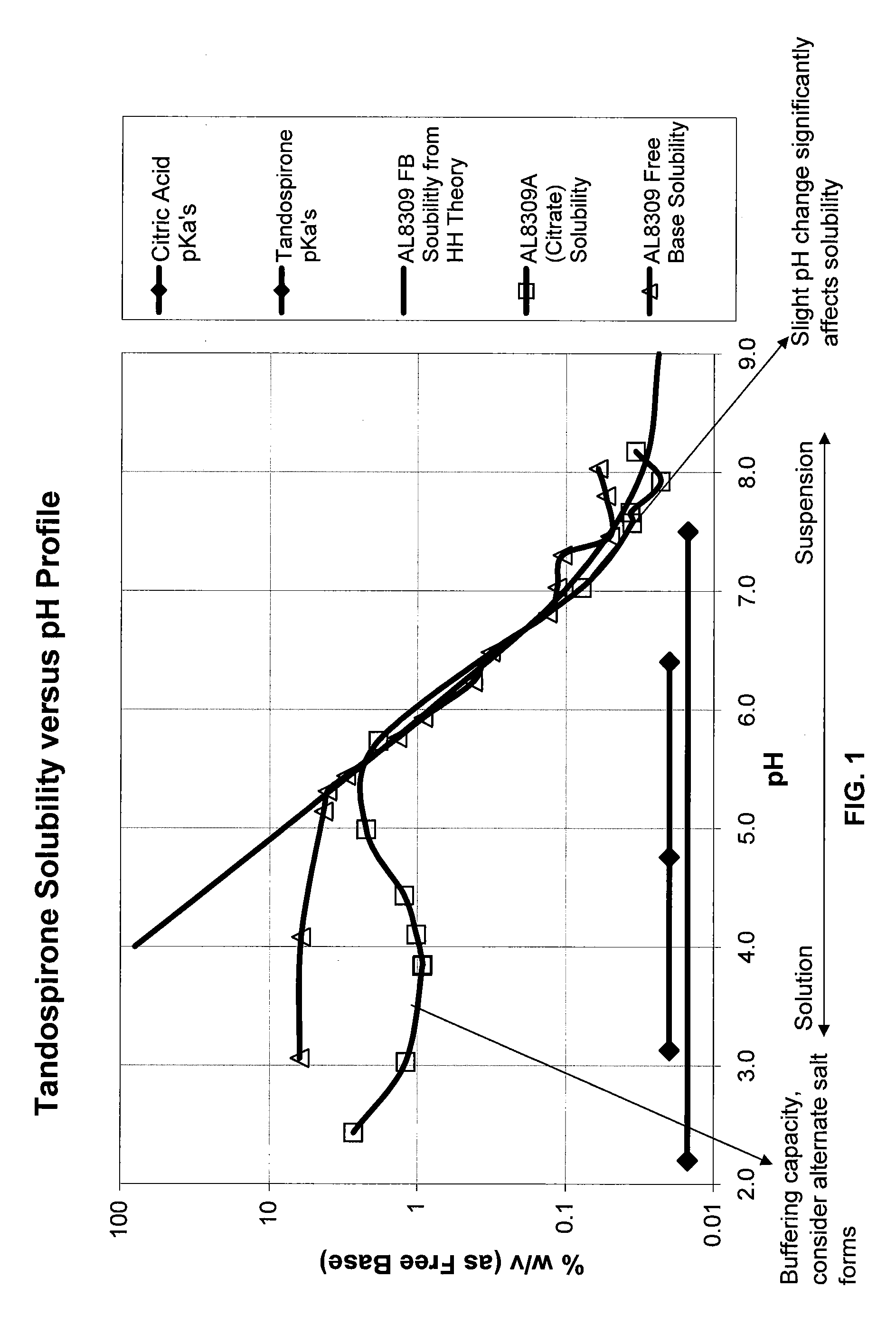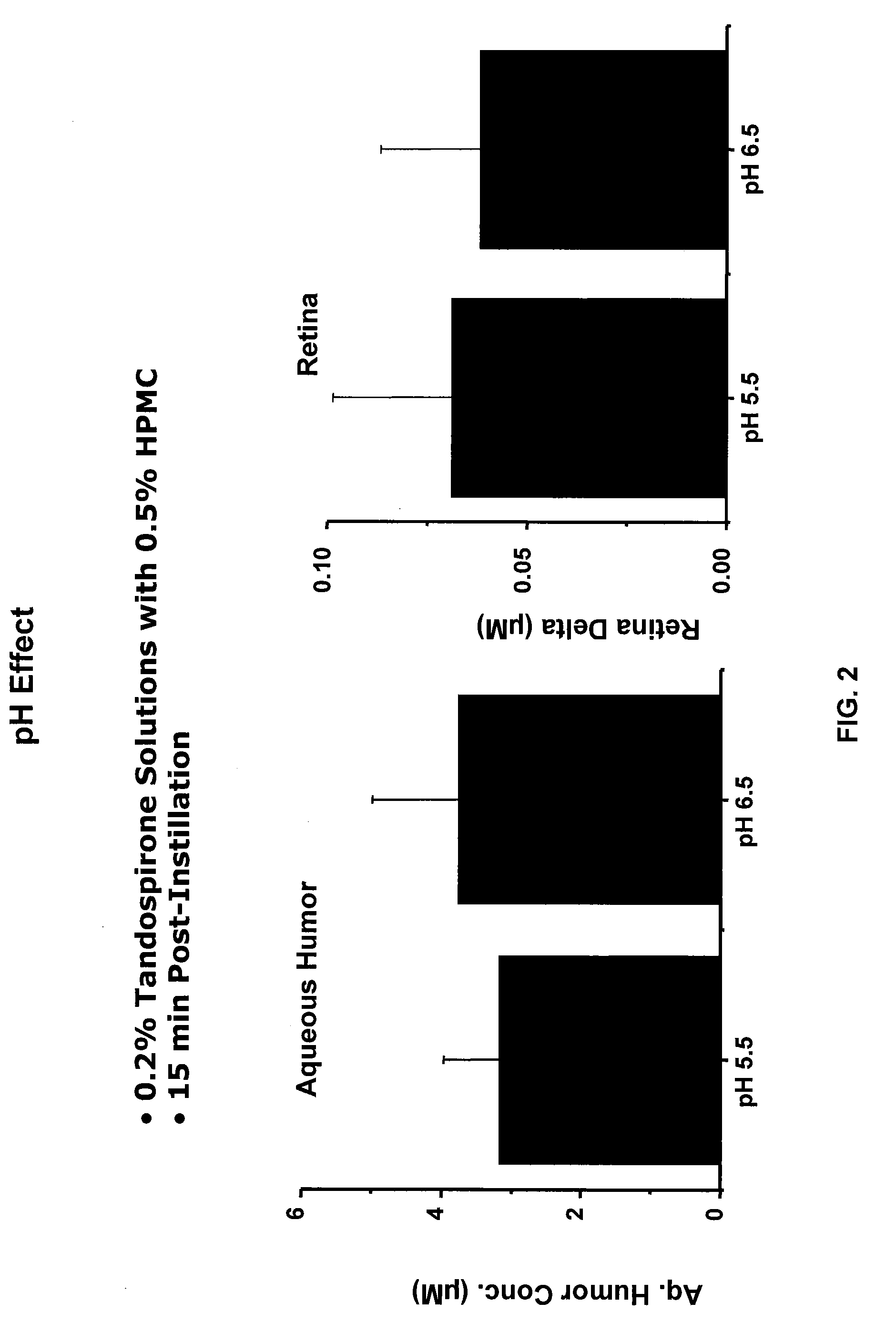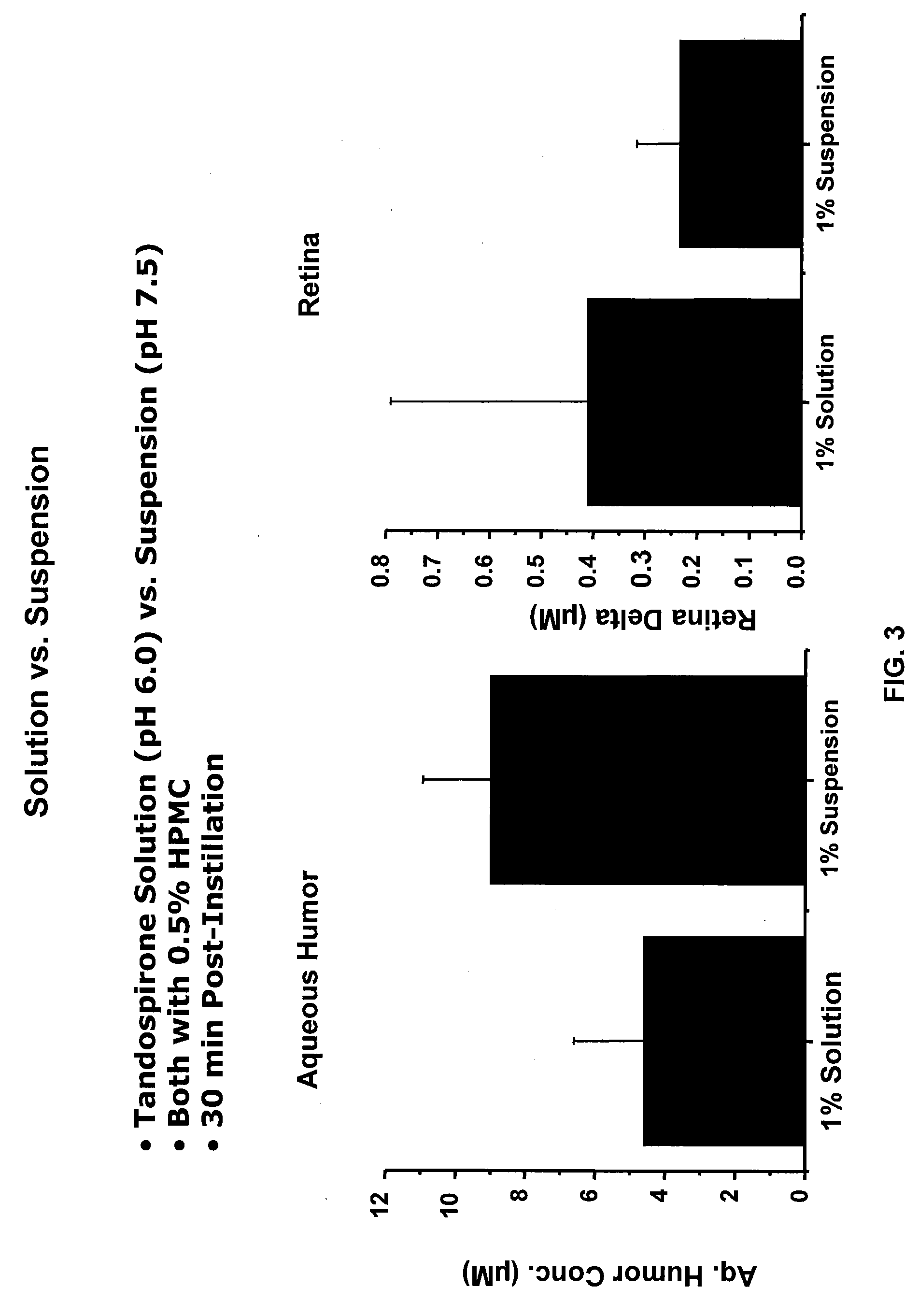Compositions of Topical Ocular Solutions to Deliver Effective Concentrations of Active Agent to the Posterior Segment of the Eye
a technology of active agents and compositions, applied in the direction of drug compositions, pharmaceutical delivery mechanisms, medical preparations, etc., can solve the problems of no cure for diseases caused by ocular neovascularization and enhanced vascular permeability, no effect of enhancing vascular permeability, and reducing sharpness and gaps in vision
- Summary
- Abstract
- Description
- Claims
- Application Information
AI Technical Summary
Benefits of technology
Problems solved by technology
Method used
Image
Examples
example 1
[0054]This example illustrates the preparation of a topical formulation, according to the invention.
IngredientAmount (w / v, %)Tandospirone hydrochloride 1.925Sodium Acetate (Trihydrate)0.14Sodium Chloride0.54Benzalkonium Chloride0.01Disodium Edetate, Dihydrate0.01Hydrochloric acidq.s. to pH 5.1 ± 0.2Sodium Hydroxideq.s. to pH 5.1 ± 0.2Water for Injectionq.s. to 100%
Preparation of the Formulation
[0055]In a suitable vessel, weigh and add sodium acetate, sodium chloride and Disodium Edetate, dehydrate. Add Tandospirone Hydrochloride raw material to the vessel. Then proper amount of water for injection is added to the vessel and mixed thoroughly until all ingredients are dissolved in the solution. The pH of the solution may be to be adjusted to around 5.0 to facilitate the dissolving. Benzalkonium chloride then is added and pH of the solution is adjusted properly.
example 2
Evaluation of 1.75% Topical Ocular Formulation (BID) Containing a Highly Insoluble Active Agent in the Rat Photo-Oxidative Induced Retinopathy Model
[0056]Summary. Sprague Dawley rats were dosed topical ocular (OU, BID) starting 21 days prior to light exposure. Five days after light exposure, retinal function was assessed in rats dosed with 1.75% Topical Ocular Formulation (BID) containing a highly insoluble active agent and ERG a- and b-wave response amplitudes were greater than 2-fold higher than response amplitudes measured in vehicle-dosed rats. Significant protection (P<0.05) of ERG response amplitudes was also measured in rats after a 1-month recovery period.
[0057]Methods
[0058]Subjects and Dosing: Male Sprague Dawley albino rats were assigned to experimental groups which received either vehicle or 1.75% Topical Ocular Formulation (BID) containing a highly insoluble active agent. Rats were dosed topical ocular (BID) starting 21 days prior to light exposure, once immediately befo...
PUM
| Property | Measurement | Unit |
|---|---|---|
| pKa | aaaaa | aaaaa |
| pKa | aaaaa | aaaaa |
| pKa | aaaaa | aaaaa |
Abstract
Description
Claims
Application Information
 Login to View More
Login to View More - R&D
- Intellectual Property
- Life Sciences
- Materials
- Tech Scout
- Unparalleled Data Quality
- Higher Quality Content
- 60% Fewer Hallucinations
Browse by: Latest US Patents, China's latest patents, Technical Efficacy Thesaurus, Application Domain, Technology Topic, Popular Technical Reports.
© 2025 PatSnap. All rights reserved.Legal|Privacy policy|Modern Slavery Act Transparency Statement|Sitemap|About US| Contact US: help@patsnap.com



